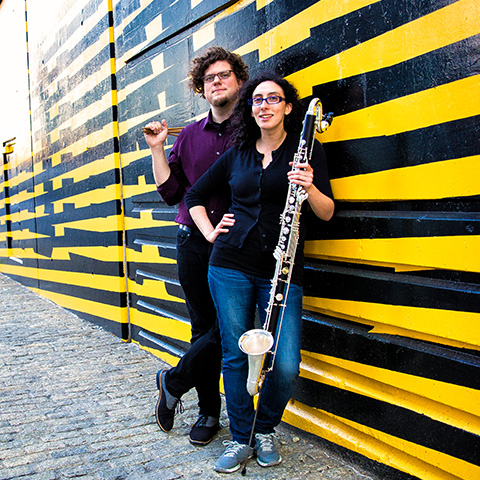TINA TALLON: dirty water (2014–15)
Although I wasn’t born and raised in Boston, in many ways I consider Boston to be my home. Boston was where I decided to become a composer, and I owe almost the entirety of my early development to the many performers, presenters, professors, and colleagues in this city. While it does not use any material from the Standells’s hit, it is inspired by the song’s quirky, grungy, playful ubiquity, and, ultimately, by the city that I love.
—Tina Tallon
JON YU: Solis one (2016)
This piece is partly influenced by the eco-political writings of Jane Bennett. She views the world as one in which speaking subjects and mute objects “participate in heterogeneous assemblages in which agency has no single locus, no mastermind, but is distributed across a swarm of various and variegated vibrant materialities.” In the case of a performance, energy can be transferred between performers, audience, instruments, space, musical materials, etc. The ecology of a performance is such that the various human and nonhuman agents have equal contribution in the resulting environment. “Solis one” is an attempt to focus on the mediation of energy (the liminal stages) between the performers and instruments, where both the mute and speaking materials have the same roles in revealing the energy flow amongst body movements, actions, and sound projections.
—Jon Yu
BADIE KHALEGHIAN: [de]ance (2021)
In order to
understand
the dance.
one must be still.
And in order
to truly understand
stillness
one must dance.
—Rumi
JENNIFER BELLOR: Only Breath (2020)
“Only Breath,” “The Breeze at Dawn,” and “All Rivers at Once” are titles of poems by the 13th-century poet Rumi, all of which moved me to write this composition.
The following excerpt of “Only Breath” inspired the creation of both movements:
My place is placeless, a trace
of the traceless. Neither body or soul.
I belong to the beloved, have seen the two
worlds as one and that one call to and know,
first, last, outer, inner, only that
breath breathing human being.
The Breeze at Dawn
The breeze at dawn has secrets to tell you.
Don’t go back to sleep.
You must ask for what you really want.
Don’t go back to sleep.
People are going back and forth across the doorsill
where the two worlds touch.
The door is round and open.
Don’t go back to sleep.
The following excerpt of “All Rivers at Once” inspired the creation of the second movement:
What is the body? Endurance.
What is love? Gratitude.
What is hidden in our chests? Laughter.
What else? Compassion.
LUIS QUINTANA: Preliminary studies on fluidity and sensuality (2023)
The piece explores the fluidity and sensuality of water; or how the musical images are diluted and emerge from aqueous textures that form and dissipate within the ensemble. In the first of these two comments, both instruments intermingle with coquettish and playful images—almost like a courtship dance with numerous twists and turns, yet always retreating back to these watery textures. The second comment sees a rather shy melody insinuate between the two instruments, appearing and dissolving into watery textures. It surfaces and fades away, drowned again.
—Luis Quintana
MIKHAIL JOHNSON: Ton yo han mek fashan (2020–21)
The title “Ton yo han mek fashan” (literally translated into “turn your hand [and] make fashion”) is a proverb with two meanings: To make of what could be deemed useless, fashionable; and to make the most of an unfortunate situation. I originally wrote the piece making the most of two instruments to create elements of a full mento band. Ironically, this piece was written in the year that endured a global pandemic, in which I was creatively paralyzed for eight months. Now, I had to make use of an unfortunate situation (the pandemic), break through my darkest times, and create a work that I always wanted to be highly optimistic and full of joy.
—Mikhail Johnson

